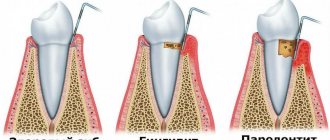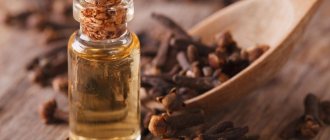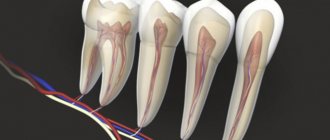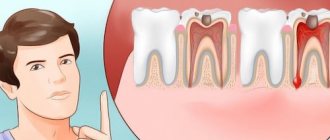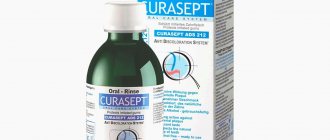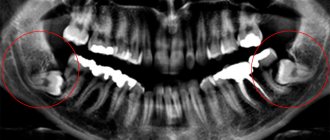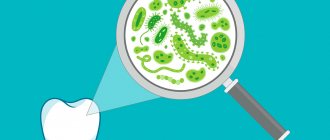Since ancient times, various herbs have been widely used for the prevention and treatment of oral cavity organs. Almost all herbal mixtures are brewed with boiling water, left for a certain time and then used as gargles to strengthen gums, stop bleeding and for toothache. To this day, string, mint, strawberry leaves and flowers, berries and leaves of raspberries and currants, plantain and walnut leaves, sage, chamomile, eucalyptus, St. John's wort and calendula are used to strengthen gums and stop bleeding. For toothache, chamomile, sage, mullein calyxes, plantain, rose petals, calendula and aloe juice, oak bark are suitable. Sometimes black peppercorns are used to relieve pain. A peppercorn is held in the area of the painful tooth, and the pepper acts as a distraction, as if drowning out the pain.
Causes of tartar
Stone is a common problem; it forms in all people due to the peculiarities of the modern lifestyle. But the speed at which it appears is different for everyone. Hard plaque forms faster as a result of the following factors:
- insufficient oral hygiene;
- predominance of soft foods, sugar and fast carbohydrates in the diet;
- uneven chewing of food on each side of the jaw;
- excessive consumption of black tea and coffee;
- smoking;
- metabolic disease;
- saliva is too viscous.
How to detect tartar
You can do this at home in front of a mirror. Carefully examine your teeth from the outside and inside. The stone is located on the surface of the enamel and in the gum pockets. It is most pronounced on the inner side of the lower incisors. Tartar is divided into supragingival and subgingival.
Supragingival plaque is easier to detect; it covers the visible part of the enamel and has a yellow or brown tint. In a neglected state, it provokes the formation of caries. Signs of such a stone are bad breath, the appearance of pigment spots, and darkening of the enamel.
Subgingival plaque can only be detected by a doctor. This stone forms in the periodontal pocket—the area where the gum covers the tooth. The plaque has a dark brown or greenish-black tint. If neglected, it leads to the formation of periodontitis. This disease is dangerous due to the loss of healthy teeth. A distinctive sign of subgingival plaque is bleeding and increased sensitivity of the gums.
Herbs for inflammation
Gargling with infusions and decoctions of medicinal herbs is the most popular method of home treatment for gum inflammation. For their preparation, both a separate plant and herbal preparations are used. It is necessary to mix the herbs in equal proportions, brew the required amount of the mixture with boiling water, leave for 20-30 minutes. Let's look at the most effective herbal recipes.
The most effective are chamomile, calendula, aloe, golden mustache, ginger, sage, oak bark, and calamus root.
- Aloe is used for rinsing (freshly squeezed juice), applying. Squeeze the juice from one leaf, dilute it in half a glass of water, rinse your mouth three times a day. Apply an aloe leaf cut lengthwise to the inflamed gum several times a day. Do not use alcohol tincture as it can cause burns.
- Golden mustache perfectly strengthens the gums and is used to treat and prevent inflammatory processes. Grind the plant leaf, pour a glass of boiling water, leave for 30 minutes. Rinse your mouth after brushing your teeth in the morning.
- Ginger is an excellent natural antibacterial agent and an effective prevention of dental diseases. Used for daily rinsing, 1-2 times. To strengthen your gums, it is recommended to chew a piece of ginger well after eating.
- Sage is effective against increased bleeding of gums and prevents the occurrence of the inflammatory process. A tablespoon of sage is infused for half an hour in 300 ml of boiled water. The infusion is suitable for rinsing, mouth baths, and compresses.
- Oak bark is used in the form of a decoction for various inflammatory diseases of the mucous membrane. Boil 2 tablespoons of oak bark for 10 minutes in half a liter of water, let it brew, and use for rinsing.
- Gargling with a decoction of chamomile flowers is often used for gingivitis. Leave one spoon of flowers for 30 minutes, strain. Rinse your mouth systematically until complete healing.
- Calamus root effectively fights the symptoms of inflammation and eliminates bad breath. Pour 200 ml of boiling water over the crushed calamus root and let it brew. Rinse your teeth and gums with the infusion every day.
Teeth cleaning from tartar in the clinic
In dentistry, to remove tartar, you can use the service of professional teeth cleaning (or professional oral hygiene). This service is available in almost all dental clinics. Several professional methods are used to remove tartar:
- Ultrasonic cleaning. This is the most accessible and widespread method. The doctor uses a special device - a scaler. It creates low-frequency vibrations that gently peel away hard deposits from the enamel. The doctor then uses water and air pressure to cleanse the mouth. Ultrasound is suitable for both supragingival and subgingival deposits. This method is safe for enamel and gums. At the end of the procedure, the dentist polishes and fluorides the teeth to reduce sensitivity and strengthen them.
- Laser cleaning. The procedure is similar to ultrasonic cleaning, the only difference is in the device used. Laser is considered a more modern method, effective and safe. The advantage of this method is that the laser promotes rapid gum regeneration and has an antibacterial effect.
- Air Flow. A modern way to clean the mouth. More expensive compared to the first two options. For cleaning, the doctor uses a pressure consisting of water, air and sodium carbonate. This method differs in that in addition to removing tartar, the enamel is also lightened.
There are also options for chemical and mechanical cleaning, but due to their traumatic nature and low efficiency, modern clinics do not use them.
How to get rid of bad breath
How can a person get rid of bad breath? There are several ways, let's look for the most effective one.
Freshener sprays will get rid of unpleasant odors
This option, with which you can freshen your breath, is suitable for those people who are constantly “on the move” - leading an active lifestyle, rarely being at home. This breath freshener is relatively new, but the faster pace of life has prompted its development. This spray easily fits into a bag or suitcase; it can be used quickly and unnoticed by others.
Many professional companies specializing in oral hygiene products now offer spray fresheners. The most neutral scent of them all is mint scented sprays. Many sprays contain substances that have preventive properties on the condition of the oral cavity - preventing the appearance of caries, the development of periodontitis, the formation of plaque or tartar. And yet, the effect of mouth freshener sprays is based on “replacing” an unpleasant odor with a pleasant one, and not on eliminating the cause of bad breath. This is a good way for active and traveling people, but you should not concentrate only on this method to freshen your breath.
Mouthwash
The main function of a mouth rinse is to “wash out” pieces of food from the mouth to prevent the formation of plaque. Most mouth rinses have medicinal properties and are gentle on your gums and teeth while strengthening them and removing bad breath.
Giving mouth freshness is an additional function of mouth rinses, but this one does it perfectly. Most mouthwashes have a mint or herbal flavor. To make your mouth smell pleasant for a long time, do not rush to spit out the mouthwash - it must remain in the oral cavity for at least thirty seconds. During this time, the beneficial substances included in the rinse aid will be able to penetrate the layers of enamel and linger for a long time.
Refreshing candies
The principle of operation of refreshing lollipops and sweets is similar to the action of oral sprays - the unpleasant smell is replaced by a pleasant one. Only a few lollipops contain substances that strengthen tooth enamel. Moreover, many lollipops contain sugar - then their use is strongly discouraged, because their resorption can lead to the destruction, rather than strengthening, of the enamel.
Refreshing candies are suitable in cases where there is nothing else at hand or for some reason you do not want to use a spray. Another advantage of refreshing lollipops is that they are good to use while traveling on public transport so that your health does not deteriorate. This is suitable for those who, for example, get motion sickness in transport.
Chewing gum is a way to freshen your breath
This is perhaps the most common way to remove bad breath. This is not surprising - chewing gum is compact, inexpensive, it is always at hand, and besides, it has a pleasant taste. But you shouldn’t get hung up on the exotic flavors of chewing gum - after all, the most optimal taste is mint. Try not to buy chewing gum of exotic colors - bright pink or green, they contain dyes that damage your teeth.
Chewing gum is really effective at freshening breath. But don't chew it for too long. Chewing gum should not be consumed immediately, but half an hour after eating and chewed for no more than ten minutes. The fact is that prolonged chewing can cause malocclusion and also disrupt the functioning of the gastrointestinal tract.
Mint, herbs and some products
This method, close to nature, is suitable for those who live outside the city. After all, where else can you find fresh mint, herbs, parsley, rosemary at hand? Chewing one leaf of greenery really freshens your breath, and our ancestors knew this method.
Some vegetables and fruits can also have a good effect on a person's breathing. First of all, these are crunchy foods - cucumbers, apples, bell peppers, celery. Citrus fruits and berries also lighten your breath. But even here, be careful – frequent consumption of citrus fruits can destroy tooth enamel.
How to remove tartar at home
On the Internet you will find a dozen options for quickly removing tartar using available means: soda, hydrogen peroxide, vinegar, salt, herbal decoctions. We strongly do not recommend using any of them, because they are all ineffective and potentially dangerous. Why you can’t use home methods for removing tartar:
- When using soda and salt, abrasive particles damage the enamel.
- Solutions with vinegar and soda can damage the mucous membrane and cause burns.
- These methods are ineffective. For example, subgingival deposits can only be removed in the dentist's office.
- Herbal decoctions can stain the enamel, after which whitening will be required.
- Partial destruction of the enamel is possible.
- It is very easy to go overboard with the exposure time or dosage of these products.
Prevention of tartar formation
Why do stones form on teeth? Primarily due to insufficient oral hygiene. Daily care should include brushing your teeth using a brush and toothpaste, mouthwash and dental floss. Carry out comprehensive cleaning twice a day: morning and evening. It is important to choose the right care products depending on the hardness of the brush, the composition of the paste and rinse aid, and the thickness of the thread. For example, a brush that is too hard can damage the enamel and mucous membranes, while a brush that is too soft will not clean plaque properly. You can choose hygiene products during a consultation with a dentist.
In addition to daily care, prevention also includes regular visits to the dentist. You must come for a routine examination and professional oral hygiene at least twice a year.
How to clean teeth from tartar? First of all, in the dentist's office. At home, you can only prevent stone formation through proper cleaning. The doctor will select the professional hygiene option depending on the condition of the teeth and gums and the patient’s personal preferences. Tartar cannot be ignored. Even if it does not bring noticeable discomfort, it is dangerous for the development of oral diseases, in particular, caries and periodontitis.
Why do we feel bad breath?
The main cause of bad breath is oral disease. The very presence of bad breath indicates the activity of pathogenic bacteria in the oral cavity. Bad breath can be a sign of several diseases at once. A dentist can help identify the disease, make a diagnosis and prescribe treatment. Don’t waste time - if you have bad breath, it’s better to immediately contact a specialist to prevent the development of the disease.
Our dentists accept appointments by calling 8 or using the online appointment form. If you begin treatment on the day of your first visit, your consultation with a dentist will be free. Find out what we can expect at your first visit to our dentistry by following the link.
So, a list of diseases where bad breath acts as a symptom:
- caries – tooth decay;
- periodontitis is an inflammatory disease of the tissues surrounding the tooth;
- alveolitis is a disease caused by complications that arise after tooth extraction;
- bacteriosis;
- glossitis is an inflammatory disease of the tongue;
- salivary stones and other diseases of the salivary glands.
Bad breath can also signal the presence of some disease in the body. The condition of the gastrointestinal tract may be in disarray. Bad breath can also be a symptom of bronchitis. More precisely, this respiratory disease is often accompanied by worsening bad breath. But even in this case, only a specialist doctor can determine the presence of the disease. Our dentistry is located next to the multidisciplinary clinic “Diamed Shchelkovskaya”, where you can get examined by the necessary specialists at a discount.
All of the above cases refer to the situation when bad breath becomes permanent - it constantly accompanies a person. But there are situations when an unpleasant odor appears when we consume specific products. Then there is no need to panic - you just need to know the methods of how you can quickly freshen your breath.
A person may notice bad breath after eating the following foods:
- tea, strong coffee;
- wine and other alcoholic drinks;
- garlic, onion;
- fish.
It is worth mentioning smokers separately - it is no secret that the breath of tobacco smokers cannot be called pleasant.
